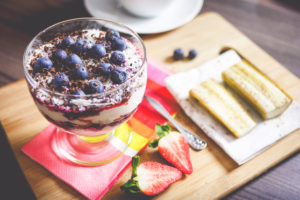“King Kong ain’t got nothing on me,” is a quote about invincibility. Many African Americans feel this way about their health status. There are some facts1 from the Centers for Disease Control (CDC) that should show you that we aren’t invincible:
- Percent of men aged 20 and over with hypertension (measured high blood pressure and/or taking antihypertensive medication): 40.5% (2013-2016)
- Percent of women aged 20 and over with hypertension (measured high blood pressure and/or taking antihypertensive medication): 44.0% (2013-2016)
- Percent of persons all ages in fair or poor health: 13.5%
- Percent of persons under age 65 without health insurance coverage: 11.3%
- Percent of men aged 20 and over with obesity: 37.5% (2013-2016)
- Percent of women aged 20 and over with obesity: 56.1% (2013-2016)
Where did these Tips come from?
This content is provided as a service of the National Institute of Diabetes and Digestive and Kidney Diseases (NIDDK), part of the National Institutes of Health. Content produced by the NIDDK is carefully reviewed by NIDDK scientists and other experts. Here are the tips2.
You don’t have to give up all of your favorite foods or start training for a big race to improve your health. Over time, small changes to your eating, drinking, and physical activity habits may help you control your weight, feel better, and improve your health.
This fact sheet will give you ideas on how to make better food and beverage choices and add physical activity to your life. When you make these changes, you may also become a health champion to help your family, friends, and others in your community do the same.
Am I overweight?
More than three in four African American adults are overweight or obese.
The body mass index (BMI) is the tool used most often to find a person’s weight status. This tool may help you find out if your weight could raise your chances of developing health problems described later in this fact sheet.
Another way to find out if you carry too much weight is to measure your waist. You may be more likely to have weight-related health problems if your waist is above a certain size. For women, the size is above 35 inches. For men, the size is above 40 inches.
For more on how to measure your BMI and waist size, visit the Aim for a Healthy Weight.
What is BMI?
The BMI is a tool that measures your weight in relation to your height. It can help you find out if your weight is in a healthy range (normal weight”). Here are the main BMI cutoff values for adults:
- 18.5 to 24.9: normal weight
- 25 to 29.9: overweight
- 30 or greater: obese
For a BMI chart, see the Weight-control Information Network (WIN) page Better Health and You. An online tool for measuring your BMI is also available.
Could my weight lead to health problems?
Excess weight, especially around the waist, is linked to serious health problems. But not everyone who is overweight or obese has these problems. Excess weight may raise your chances of having these health problems:
- certain cancers
- heart disease and stroke
- high blood pressure
- kidney disease
- type 2 diabetes

For more information, see the WIN page, Do You Know Some of the Health Risks of Being Overweight?
Ask your doctor if you should be concerned about your weight. Your doctor may also do tests to see if you have high blood sugar or high cholesterol (a type of fat in your blood) and ask if you have a family history of certain diseases. Check out the “Questions to Ask Your Doctor” section for ideas about how to start talking with your doctor about weight and health.
You may lower your chances for health problems by losing weight. Losing 5 to 10 percent of your body weight may improve your health. If you weigh 200 pounds, that would mean losing 10 to 20 pounds.
Slow and steady weight loss of ½ to 2 pounds per week is the safest way to lose weight. To do so, you may need to take in 500 to 750 fewer calories per day. Cutting back on sugar-sweetened beverages like soda and sports drinks is a great way to reduce calories and improve your health.
Questions to Ask Your Doctor
- What is a healthy weight for me?
- What foods and beverages should I consume to improve my health?
- What kinds of physical activity may help me improve my health? How often and for how long should I do these activities?
Where do I start?
It can be hard to control your weight when you are not sure what to eat and drink, do not know the best ways to be physically active, or have limited time and money.
Start by talking to your doctor about ways to improve your eating, drinking, and physical activity habits. Consuming healthier foods and beverages and getting regular physical activity may help you reach and stay at a healthy weight. And write down your questions before your visit, so you are prepared. Refer to the section above for examples of questions to ask your doctor.
How can I consume healthier foods and beverages?
Practice making good food and beverage choices

Good food and beverage choices give your body the fuel it needs, help you stay full longer, and improve your health.
The federal dietary guidelines advise adults to consume these foods and beverages:
- fruits and vegetables
- seafood, lean meats and poultry, eggs, beans, and unsalted nuts and seeds
- fat-free or low-fat milk and milk products, including fortified soy beverages
- whole grains like oatmeal, whole-wheat bread, and brown rice
Think of ways that you can add healthy foods and beverages to your life.
Try these ideas:
- Cover half of your plate with fruits and veggies and choose high-fiber foods like beans and whole-grain breads and cereals. Fruits and veggies may be fresh, canned in 100 percent fruit juice, frozen, or dried, and may be whole, cut up, or pureed. Look for low- or no-salt options when buying canned or frozen veggies.
- Choose a healthy option like a salad topped with grilled chicken (not fried) or ask for a side of steamed veggies instead of fries when you eat away from home.
- Choose water, fat-free milk, or sugar-free coffee or tea rather than sugary beverages.
What if I can’t drink milk?
Milk is a good source of calcium and vitamin D. If you can’t digest lactose (the sugar found in milk), try these foods for calcium:
- dark leafy vegetables like collard greens or kale
- “lactose-reduced” low-fat or fat-free milk, or soy beverages with added calcium and vitamin D
- orange juice with calcium
Write down your ideas for changes you could make to eat and drink healthier and a date when you will start. At first, make one change. Once you have made one change, you can add another.
| Goal | Date |
|---|---|
Commit to eating and drinking fewer foods, beverages, and snacks that have solid fats and/or added sugars.
Many foods and beverages have empty calories (calories from solid fats and/or added sugars). Calories from solid fats and added sugars are often called empty calories because they have few or no nutrients.
- Solid fats (or saturated fats) are fats that are solid at room temperature, like butter and shortening. Some solid fats are found naturally in foods. They can also be added to foods like potato chips by food companies.
- Added sugars are sugars and syrups that are added when foods or beverages like soda are made.
Solid fats and added sugars can add a lot of calories to what you eat and drink. See the box “Choose foods and beverages with few or no empty calories” for examples of foods and beverages with and without empty calories.

A small amount of empty calories is okay, but most people get too many. You can limit empty calories by consuming foods and beverages with empty calories less often or by decreasing the amount you eat or drink.
Try these ideas to reduce or cut empty calories:
- Replace snacks like chips and sweets with fat-free yogurt or baby carrots. And buy low-fat and sugar-free versions of your favorite snacks to limit the amount of empty calories you eat or drink. Check that these products have fewer calories than the regular products.
- When planning get-togethers, find ways to cut back on sugar, salt, and fat as you prepare your favorite recipes. For example, instead of frying meat and veggies, bake or grill them to cut down on the amount of fat. And use low-fat, low-sugar mayo and dressings.
- If you love dessert or have a sweet tooth, replace cakes, cookies, and other treats with fresh fruit and low-fat or fat-free yogurt.
Think of ways you can cut empty-calorie foods and beverages.
Write down your ideas about how you will replace empty-calorie foods and beverages with healthier options. Once you have made one change and are used to it, you can make another.
How many calories you need to stay healthy depends on your age, genes, sex, height, weight, and how active you are. In general, men need more calories than women do, and younger adults need more calories than adults in midlife and older. Talk to your doctor about your calorie needs.
Limit salt.
Sodium (salt) can increase your blood pressure. The Dietary Guidelines advise that African Americans should aim for no more than 1,500 mg a day, including sodium from processed foods.
Before buying packaged foods, read the Nutrition Facts label to find out how much sodium, solid fat, and other nutrients are in one serving of the food. The label also tells you how many servings are included in the package.

For more information and tools to help you plan healthy meals, read Just Enough for You: About Food Portions and visit the ChooseMyPlate website.
Choose foods and beverages with few or no empty calories.
Some examples of foods and beverages that provide nutrients, shown in forms with and without empty calories, are:
| Foods and Beverages with Some Empty Calories | Foods and Beverages with Few or No Empty Calories |
|---|---|
| fried chicken | baked chicken breast without skin |
| whole milk | fat-free milk |
| sugar-sweetened cereal | whole-grain cereal |
| fruit canned in syrup | fruit canned in 100 percent fruit juice |
Making better choices, like baking instead of frying chicken, can help you cut down on the added sugars and solid fats you eat or drink.
How can I be more physically active?
To improve your health, aim for at least 150 minutes of moderate-intensity aerobic activity per week (or 30 minutes a day, five days a week). This type of activity speeds up your heart rate and breathing. You should be able to speak several words in a row while doing aerobic activities, but you should not be able to have a long chat.

Physical activity can be broken up into 10-minute sessions throughout the day. For example, take a brisk 10-minute walk before work, one after lunch, and another after dinner to get to 30 minutes a day.
To lose weight and keep it off, you may need more activity. Aim for 300 minutes per week (or 60 minutes a day, five days a week).
Try these moderate-intensity activities to reach your goal:
- walking briskly
- water aerobics
- gardening
As you become more comfortable, consider adding more vigorous activities. Examples include these:
- running
- aerobic dancing
- heavy gardening (digging and shoveling)
In addition to aerobic activity, on at least two days per week, try activities that strengthen your muscles. Examples are exercises that use hand weights or your own body weight.
Think about your weekly goal and the activities you will do each day to meet your goal.
Try these ideas:
- Ask a friend or family member to be your workout buddy and plan an activity together. Sign up for a low-cost fitness class at a local center or make plans to visit a park or museum where you can walk together safely.
- Take a daily 15-minute walk if your schedule allows and you can do so safely. If the weather is bad or you don’t have a safe place to take a walk near your home, visit a local shopping center and walk indoors.
- In addition to your moderate-intensity activities, build physical activity into the things you do every day. This can be very helpful when your time is limited, or you need to care for your children. Do housework with energy, park farther away, or get off public transportation one block earlier and walk the rest of the way.
Write down your goal for getting more active and how you will meet it. Track your progress to help you stick with it.
| Goal and How I Will Meet It | Date |
|---|---|
Hair Care Tips
You can be active and still keep your hair looking good. Talk to your hair stylist about a hair care routine and style that fit your active life. Try these ideas:
- a natural hairstyle or a style that can be wrapped or pulled back
- a short haircut
- braids, twists, or locs

Stay on track.
Once physical activity becomes a part of your routine, you need to stick with it. Keep things interesting, avoid slip-ups, and find ways to cope with what life throws at you. Try these ideas if you start to slip:
- Plan ahead to avoid setbacks. Find a backup activity you can do in case of bad weather or injury. If you do have a setback, regroup and focus on meeting your goal again as soon as you can.
- Mix up your routine with new activities, physical activity buddies, and healthy rewards.
- Make physical activity a social event. When you invite your friends and family to join you, physical activity can be fun. Perhaps members of your place of worship may want to start a physical activity program or walking club.
For more ideas, see Changing Your Habits: Steps to Better Health.
The path to improving your eating, drinking, and regular physical activity habits isn’t easy. But don’t give up. Remember, consuming healthy foods, beverages, and snacks and getting regular physical activity over time is key to a healthy body, mind, and spirit.
Beat your physical activity roadblocks!
| If You… | Then Try This… |
|---|---|
| don’t have child care | Be active with your children: bike, play tag or walk together. |
| don’t like or don’t want to exercise | Do something you enjoy, like dancing to the radio or planning active outings with family or friends. |
| don’t have a safe place near your home to be active | Work out in your home to a video from the library or walk in a local shopping center. |
Research
The National Institute of Diabetes and Digestive and Kidney Diseases (NIDDK) conducts and supports a broad range of basic and clinical obesity research. More information about obesity research is available at http://www.obesityresearch.nih.gov.

Additional Links
The NIDDK would like to thank:
Delia Smith West, Ph.D., SmartState Endowed Chair, Technology Center to Advance Healthful Lifestyles and Professor, Department of Exercise Science, Arnold School of Public Health, University of South Carolina; and Irmina Ulysse, Diabetes Prevention Program Director, YMCA of Metropolitan Washington.
You don’t have to be one of the 13.5% African Americans who are in fair or poor health. Take charge of your life and make lifestyle changes to live better.
Jay Harold hopes you enjoyed this post, “10 Health Tips for African-Americans: 6 Shocking Facts. Please Share it and read more about Jay Harold here. Please take this advice from Muhammad Ali and give back to others. “Service to others is the rent you pay for your room here on earth.”




